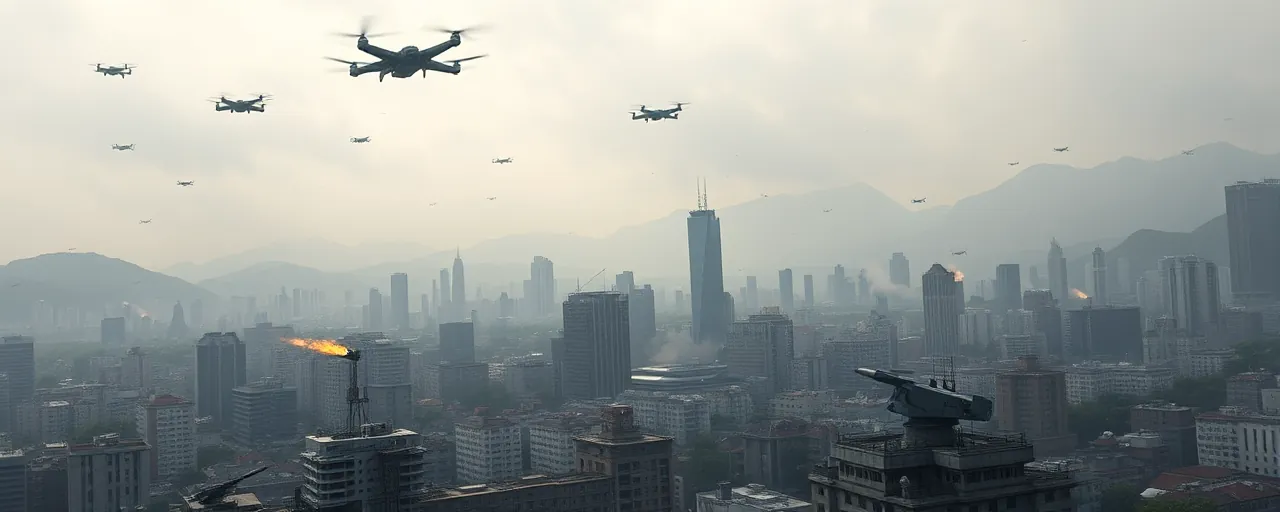A Shifting Power Landscape
China’s military ambitions have jolted the Indo-Pacific region into a new era of uncertainty. With a defense budget climbing to $245 billion for 2025, Beijing is pouring resources into an arsenal that spans nuclear warheads, stealth jets, and sprawling naval fleets. John Noh, a senior Pentagon official, told lawmakers on April 9, 2025, that this buildup is no mere flex of muscle; it’s a calculated push to overtake the United States as the world’s leading power. The scale of it hit me like a freight train, a reminder that global influence isn’t static, it shifts with every ship launched and missile tested.
The stakes are highest around Taiwan, where Chinese President Xi Jinping has set a 2027 deadline for the People’s Liberation Army (PLA) to be invasion-ready. Admiral Samuel Paparo, head of U.S. Indo-Pacific Command, described China’s actions as rehearsals, not just drills, pointing to a 300% spike in operations near Taiwan in 2024. For people watching from afar, it’s a wake-up call: this isn’t abstract geopolitics, it’s a real-world chess game with lives on the line.
China’s Arsenal Expands, Alarms Ring
Beijing’s military machine is firing on all cylinders. The PLA Navy now boasts the world’s largest fleet by ship count, outpacing U.S. production in warships and submarines. Add in hypersonic missiles, AI-driven warfare systems, and a growing nuclear stockpile, and you’ve got a force aiming for supremacy by 2049, the centennial of the People’s Republic. Experts note that China’s shipbuilding capacity alone overshadows America’s, a gap that’s tough to swallow for anyone who assumed U.S. dominance was unshakeable.
Yet, this isn’t a one-sided story. Paparo warned that China’s aggressive moves near Taiwan might stiffen global resolve instead of breaking it. Taiwan’s own defenses are ramping up, leaning on mobile missile systems and drone swarms to make any invasion a nightmare. The island’s leaders aren’t sitting idle; they’re betting on a ‘porcupine’ strategy, turning their home into a bristling fortress. It’s a gamble that could either deter Beijing or light the fuse for something bigger.
Beyond China: A Web of Threats
China’s rise doesn’t stand alone. North Korea’s missile tests this year, including an ICBM that could hit the U.S. mainland, have rattled nerves from Seoul to Washington. Kim Yo Jong, a key voice in Pyongyang, insists nuclear weapons are non-negotiable, a shield against what the regime sees as U.S. hostility. Meanwhile, Russia’s growing ties with both North Korea and China add another twist, with joint exercises and tech swaps signaling a bloc that’s less about ideology and more about countering Western reach.
The U.S. isn’t watching from the sidelines. Defense officials are doubling down on alliances, from Japan’s upgraded command hubs to joint drills like Balikatan 2025 with the Philippines. Paparo highlighted 120 exercises last year, a web of cooperation meant to keep the peace through strength. For regular people, it’s less about military jargon and more about what keeps the world steady, or tips it into chaos.
Deterrence or Escalation?
The U.S. response hinges on deterrence, a word that’s thrown around a lot but boils down to making aggression too costly to try. Noh argued for combat-ready forces and a beefed-up industrial base to back them, a nod to the reality that outproducing rivals matters as much as outthinking them. Allies like Japan and Australia are stepping up too, sharing the load in a region where stability’s on a knife-edge.
Still, not everyone’s sold on this approach. Some analysts wonder if piling on hardware and exercises just fuels the tension, pushing China to double down rather than back off. Taiwan’s own preparations, while defensive, could spark missteps if Beijing reads them as a dare. It’s a tightrope walk, balancing strength with the risk of stumbling into conflict no one wants.
What Lies Ahead
The Indo-Pacific isn’t a distant theater; it’s where the future’s taking shape. China’s trajectory, from Xi’s 2027 target to its 2049 vision, sets a clock ticking for everyone involved. North Korea’s defiance and Russia’s shadow only thicken the plot, leaving the U.S. and its partners scrambling to hold the line. For those new to this, it’s less about grand strategies and more about what keeps the world from unraveling.
People aren’t powerless here. Taiwan’s resilience, allied cooperation, even China’s own calculus, all hinge on choices made now. Paparo’s confidence in the joint force rings true, but it’s tempered by the sheer scale of what’s unfolding. The question lingers, sharp and insistent: can deterrence hold, or are we just delaying the inevitable?
